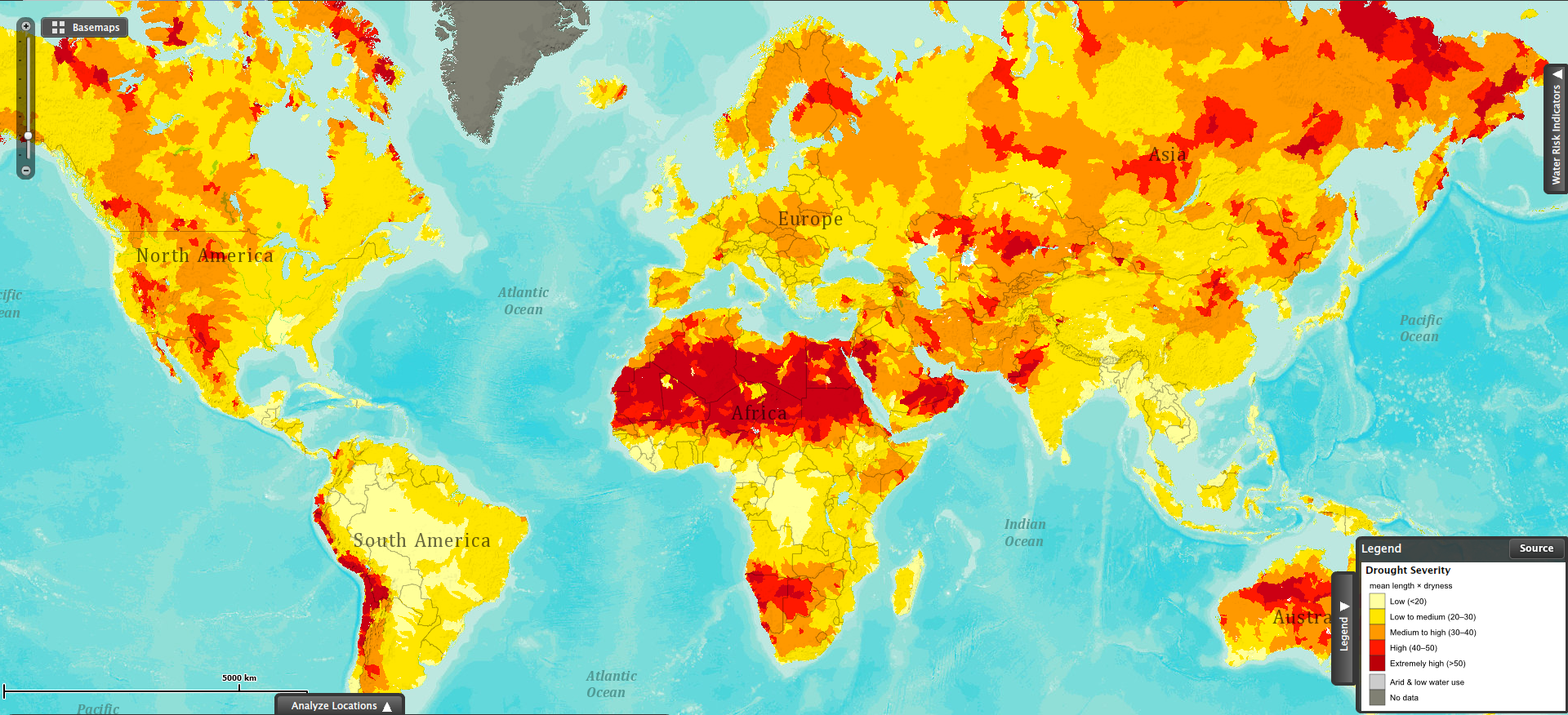
As the UN 2015 Climate Conference kicked off this week, discussions amongst world leaders, activists, and scientists over emission limits, aid burdens, and historical culpability dominated Paris. But continuing carbon emissions represent only part of the crisis. Regardless of the Earth’s temperature in a century, climate change today has created the beginning of a catastrophe that will snowball in the coming years: drought, and its corresponding effect on the global food supply.
Economically, drought is the second-most expensive weather-related event, with over $9 billion in lost revenue in the United States alone. In 2014, California lost $1.4 billion in agricultural revenue as over 500,000 acres of farmland were left fallow for lack of water. In the US, dry years increase food prices. In developing countries, drought results in famine.
UNICEF has qualified 11 current droughts as disasters. By their own definition, a disaster is “a serious disruption of the functioning of a society…which exceeds the ability of the affected community or society to cope using its own resources.” In 1992, the World Food Summit set the goal of halving the number of undernourished global citizens. Today, less than half of that goal has been met, and over a quarter of participating countries have had increasing rates of malnutrition. Six of the eleven UNICEF drought disasters are in Africa, and, in an unsurprising correlation, four of those six have regressed in food security by UN standards. The other two have had insufficient data to report because of extreme political instability.
These are only the official disaster zones, and the complete breakdown of national food security is a high threshold to cross. Countless other countries are being affected on a smaller but still frightening scale. From haunting images of Pacific islands disappearing into the sea to California imposing mandatory water usage cuts of 25% amidst a historic drought, climate change is thrown into stark, uncomfortably close relief. No longer is global warming theoretical—the changing environment is having real consequences.
Scientifically, as temperatures rise due to global warming, more moisture evaporates into the atmosphere, leaving fewer resources behind for human use. Since the 1970s, surveys of drought conditions have found longer and harsher occurrences. Over the 2000-2009 period, 30-60% of the US land mass and 36 African countries in the US and African continent alone have been impacted by drought. Horrifyingly, a drought in Eastern Africa from 2011-2013 caused between 50,000-260,000 deaths, and a massive refugee flight that took countless more lives. The UN officially declared a famine in Somalia in July 2012—the first famine in the region in over thirty years. Alongside the widespread starvation came economic regression, terrorism, and countless other social, economic, and political side effects.
The Union of Concerned Scientists, a leading climate scientific community, points out yet another unsettling fact: the droughts sweeping the world from the African savannahs to Californian coasts are not short-term phenomena. While the earth naturally cycles through drought periods, the increasingly extreme environment is not going to settle down. International response to drought focuses on stopgap measures aimed at conservation until the floodgates again open, when the unprecedented droughts are only predicted to increase in scale and scope. Over 80% of the Californian water supply grows crops, which demonstrates the swiftly deteriorating food system the current world depends upon. Carbon emission targets are not enough—the damage has already been done.
Contingency policies for higher food prices, famine, and the resulting socio-political fallout must be discussed alongside any climate deal, before even more countries fall deeper into a dry state of malnourishment.